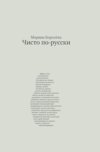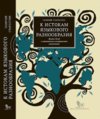
-
 Anglický jazyk
Anglický jazyk
Byzantine literature
Autor: Source: Wikipedia
Source: Wikipedia. Pages: 50. Chapters: About the Mystery of the Letters, Agathias, Alexiad, Anthology of Planudes, An Entertaining Tale of Quadrupeds, Argonautica Orphica, Barlaam and Josaphat, Belthandros and Chrysantza, Bibliotheca (Photius), Byzantine... Viac o knihe
Na objednávku, dodanie 2-4 týždne
17.82 €
bežná cena: 19.80 €
O knihe
Source: Wikipedia. Pages: 50. Chapters: About the Mystery of the Letters, Agathias, Alexiad, Anthology of Planudes, An Entertaining Tale of Quadrupeds, Argonautica Orphica, Barlaam and Josaphat, Belthandros and Chrysantza, Bibliotheca (Photius), Byzantine novel, Cassianus Bassus, Chiliades, Chronicle of Monemvasia, Chronicle of the Morea, Chronicle of the Tocco family of Kefalonia, Chronicon Paschale, Codex Hierosolymitanus, De Administrando Imperio, De Ceremoniis, Dioscorus of Aphrodito, Escorial Taktikon, Gazetteer, Geoponica, Greek Apocalypse of Daniel, Greek minuscule, Hermoniakos' Iliad, Joshua Roll, Kletorologion, List of anthologies of Greek epigrams, Madrid Skylitzes, Morgan Dioscurides, Parastaseis syntomoi chronikai, Patria of Constantinople, Romana (Jordanes), Suda, Synecdemus, Taktikon Uspensky, Teaching of Jacob, The Dead Brother's Song, Timarion. Excerpt: Byzantine literature is the Greek literature of the Middle Ages, whether written in the territory of the Byzantine Empire or outside its borders. It forms the second period in the history of Greek literature, though popular Byzantine literature and early Modern Greek literature, which begin in the 11th century, are indistinguishable. An 11th century Byzantine Gospel; its beautiful presentation perfectly illustrates the decorative style employed by scholars of that age. Many of the classical Greek genres, such as drama and choral lyric poetry, had been obsolete by late antiquity, and all medieval literature in the Greek language was written in an archaizing style, which imitated the writers of ancient Greece. This practice was perpetuated by a long-established system of Greek education where rhetoric was a leading subject. A typical product of this Byzantine education was the Greek Church Fathers, who shared the literary values of their pagan contemporaries. Consequently the vast Christian literature of the 3rd to 6th centuries established a synthesis of Hellenic and Christian thought. As a result, Byzantine literature was largely written in a style of Atticistic Greek, far removed from the popular Medieval Greek that was spoken by all classes of Byzantine society in their everyday lives. In addition, this literary style was also removed from the Koine Greek language of the New Testament, reaching back to Homer and the writers of ancient Athens. In this manner, the culture of the Byzantine Empire was marked for over 1000 years by a diglossy between two different forms of the same language, which were used for different purposes. However, the relations between the "high" and "low" forms of Greek changed over the centuries. The prestige of the Attic literature remained undiminished until the 7th century AD, but in the following two centuries when the existence of the Byzantine Empire was threatened, city life and education declined, and along with them the use of the c
- Vydavateľstvo: Books LLC, Reference Series
- Rok vydania: 2017
- Formát: Paperback
- Rozmer: 246 x 189 mm
- Jazyk: Anglický jazyk
- ISBN: 9781157680833




 Nemecký jazyk
Nemecký jazyk 
 Ruský jazyk
Ruský jazyk 




